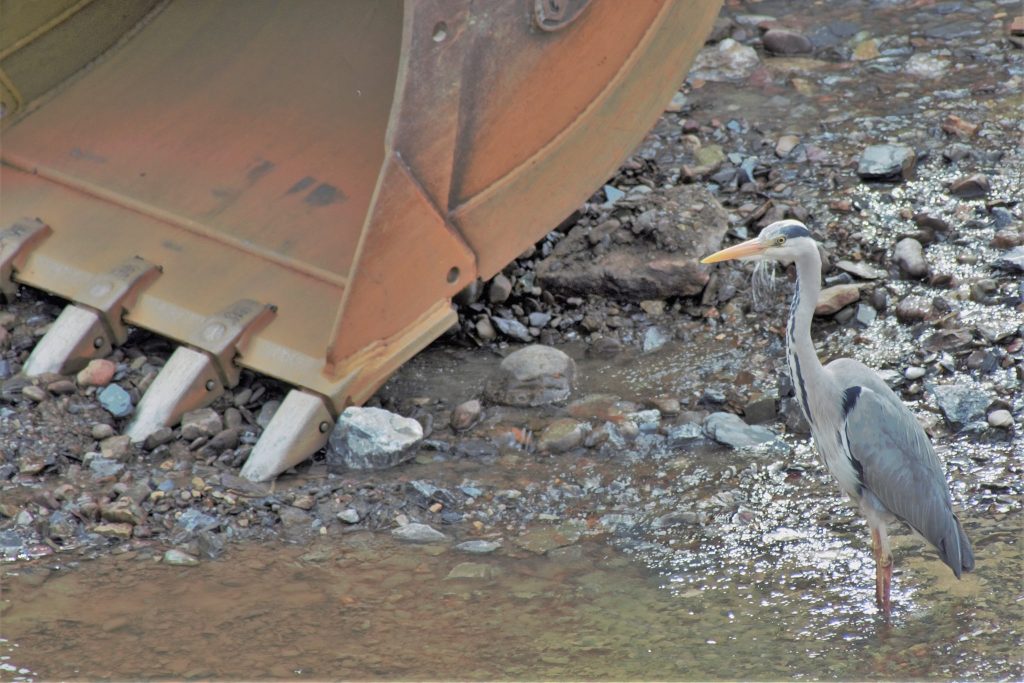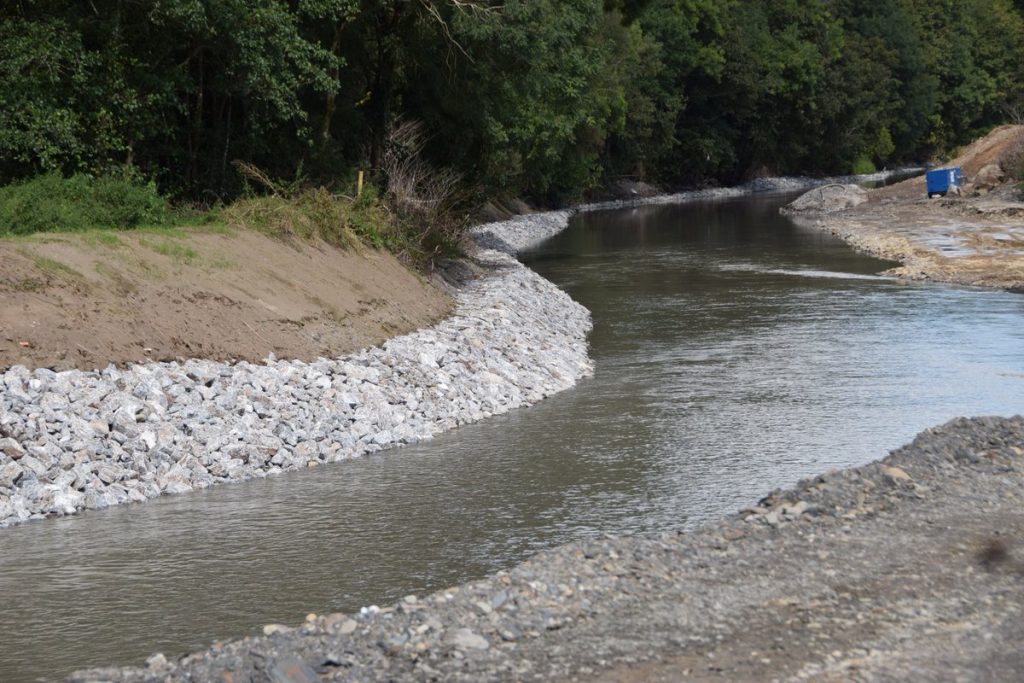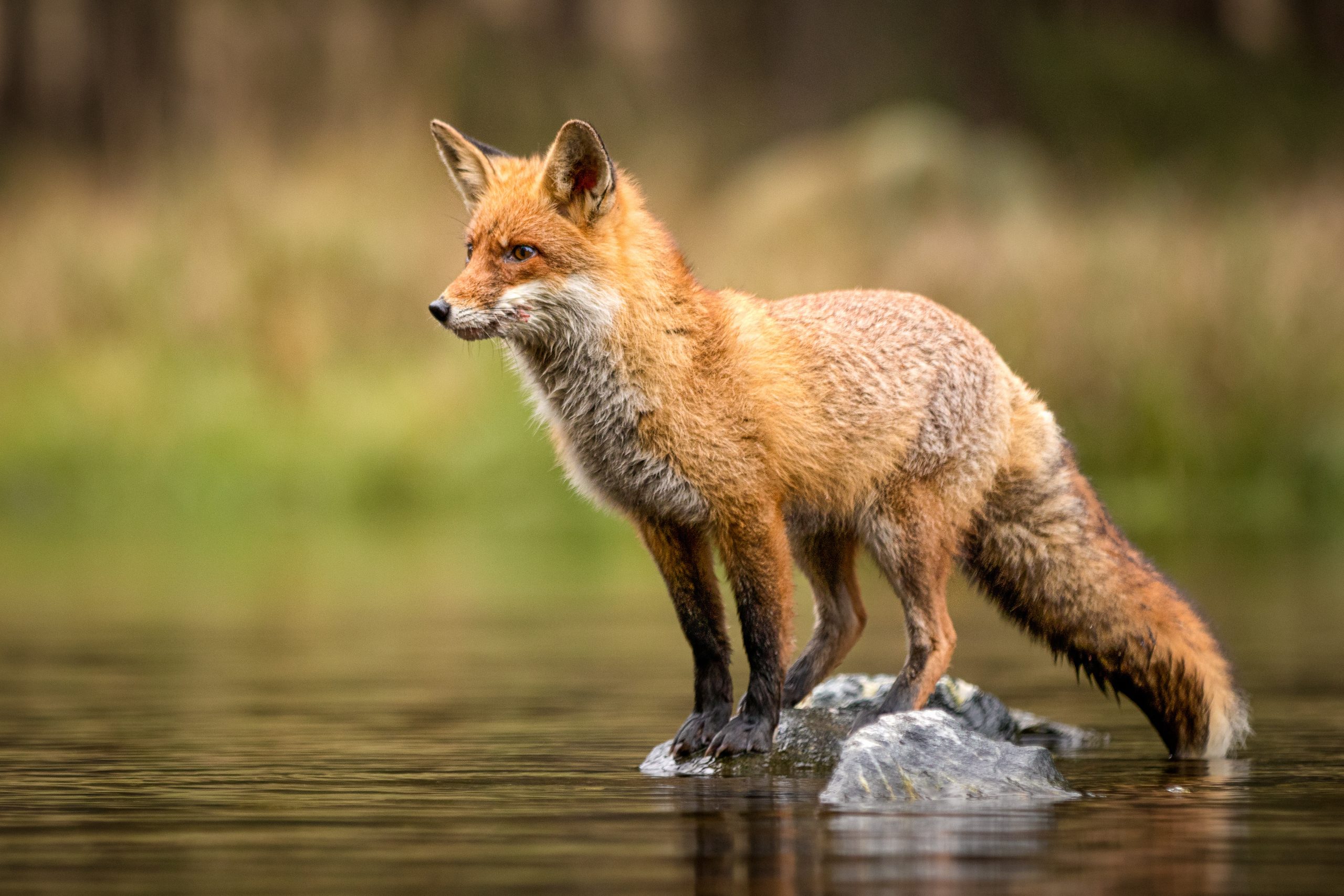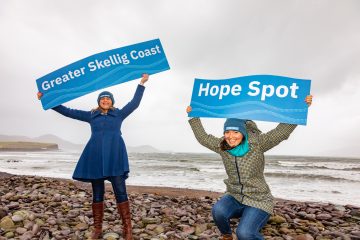The Bandon: A river under heavy construction

August 24th, 2018
For Simon Toussifar, the Bandon River is a link back to the past. The west Cork artery river, a significant source of Atlantic salmon, was a childhood fishing haunt for the keen angler.
It has been some time, however, that Toussifar and other recreational fishing folk have been able to seek out a catch of salmon. The river has hit a roadblock, or as Toussifar calls it a building site in the river itself.
Referring to operations being carried out on the river as part of a multi-million euro flood relief scheme, Toussifar says that he has become “highly alarmed” at the amount of suspended solid pollution running downstream from the works.
He says that contractors have also used the river as a “roadway for heavy machinery” and has witnessed track machines working in the middle of the river to remove the river bed.
The plan is designed to protect the town of Bandon from the menace of flooding that has plagued the town for decades. On November 19th, 2009, for example, the river’s bank bust after heavy rainfall, causing more than €20 million worth of damage to the town.
The incident prompted a public outcry and demand for an adequate flood relief scheme. The Office of Public Works (OPW) along with Cork County Council began to develop such a plan in 2010.
In 2012, the OPW exhibited plans for the scheme at Bandon Town Hall, outlining the need for defence walls, a new footbridge and, importantly, dredging activities.
By 2016, the €16 million project was ready for execution. Its environmental impact, however, remains a matter of dispute.
The Dredge report
Some experts argue that the scheme’s 3.6km dredging operation breach environmental safety standards and pose a significant threat to the river’s key species, namely the freshwater pearl mussel, eel and Lamprey that live alongside the river’s well-known salmon population.
According to ecologist Dr William O’Connor, the Bandon will never regain its lamprey stock partly due to the timing of dredging. Lamprey spawning season is in May, the same time that the OPW dredges the river.
According to the project’s Appropriate Assessment (AA) Screening Report, the period between May and September is deliberately chosen to carry out in-river works in order to avoid interfering with the reproduction of salmonids.
“There’s a lot more than to a river than catching salmon in it,” warns Dr O’Connor, however, whose company Ecofact was engaged on the project to undertake a fish stock assessment.
“Impacts on Annex II listed lampreys were not considered in any effective way,” he says, with the resulting dredging works in May 2017 and May 2018 coming during the “peak of the lamprey spawning season”.
“Lamprey habitats are not going to redevelop there again,” Dr O’Connor says. All three Irish lamprey species are noted to be of high conservation value under the EU’s Habitat Directive, under which it is mandatory to ensure the conservation of rare, threatened or endemic animals and plants.

Heron standing beside dredger in the Bandon Photo: Ecofact
In a statement, the OPW said that the scheme had been subjected to significant ecological assessments with appropriate mitigation measures designed to ensure the livelihood of the river’s fish species.
As part of that environmental study, it says, consultants “fully considered the impacts of the scheme” and the necessary mitigations measures are outlined and specified in the Environmental Impact Statement (EIS) completed in 2012 and the Environmental Impact Statement Addendum, completed in 2015.
“Appropriate mitigation measures were specified in the EIS and are being implemented in the construction phase which includes limiting the in-river works to the May-September period in order to mitigate impacts on fish species.”
The project’s documents reveal that some dredging and non-dredging options were assessed to tackle the issue of flooding. However, the OPW has cited the opted dredging option as “favoured by the public”.
River Bandon being used as a construction road today as works continue on the Bandon Flood Scheme. No evidence of any mitigation being used to protect this nationally important river @opwireland @AnglingUpdate @AnTaisce @swanireland @Irishwildlife @GreenNews_ie @savecorkcity pic.twitter.com/cZb0RzMLqm
— Ecofact (@EcofactEcology) August 23, 2018
Over-designed solution
In general, Dr O’Connor describes the flood relief scheme as the “most excessive” and “most over-designed solution” that has ever emerged to deal with flooding in the area.
He says that current rock armouring installed all around that stretch of river to stabilise its banks is “obliterating” the Cork stream.
“I can’t see the river really going to recover from the amount of rock armouring that they’re putting along the entire section,” he said.
The large fish passage – reportedly the largest of its kind in Europe – currently under construction to allow for the natural migration of fish at the Bandon Weir is another concern for the ecologist.
Dr O’Connor says that the main problem is that it is too large for Bandon’s small weir. This is leading to the entrapment of fish species, he warns.
“It’s hard to understand on what planet a fish pass of that size is a good idea to provide fish passage on such a minor weir,” Dr O’Connor says.
“It is going to be 137 metres long, and it’s almost 13 metres wide, and this is to provide mitigation for a small weir that is about two metres high. This totally dwarfs the weir that it is supposedly trying to mitigate.”

Rock armouring which is currently being installed along banks of Bandon Photo: Ecofact
Weir removal option
Dr O’Connor says the weir should have instead been demolished so that fish migration could have been naturally restored.
Earlier this year, Paddy O’Sullivan of Bandon Charitable Resources offered to remove the weir, but the OPW rejected the offer, it said, to avoid impeding the project.
“Ownership of the weir was not clear, and such an approach was not favoured at that time as the scheme was significantly underway.
“To amend the scheme in such way would have been a significant change to the confirmed scheme, necessitating further environmental assessment which would have delayed the project considerably,” the OPW said.
According to the OPW, the benefits of removing the weir would have been scant for flood relief, although they did not comment on its impact on fish migration. “Removal of the weir would not have provided significant benefits in terms of flood alleviation.”
According to the scheme’s Flood Risk Management Options documents, however, the removal of the Weir would have provided a significant reduction in upstream flood levels.
In assessing the possibility of removing the weir, the OPW concluded in its report that, as it is used for hydroelectric power generation and is listed as a cultural heritage site, the benefit of removing it “would be outweighed by the benefit of retaining it”.

River Bandon works Photo: Ecofact
The OPW also says that the current fish pass has also helped to remove a block to the upstream passage of lamprey. Nevertheless, a proposed design for the fish pass hasn’t been made available to the public for an independent assessment.
The OPW says it hopes to make the information available online. “For information purposes, the scheme’s documents will be uploaded to the project’s website again in the coming days.”
The OPW, says that they are aware that the scheme’s short-term impacts can be significant, adding, however, that they can be managed in the long haul.
For the likes of Toussifar, however, that is little consolation. “It was heart-breaking to watch what was once a thriving ecosystem that held healthy populations of fish, birds, otters, wild plants and tree life all being butchered,” he says.
“The works will finish here in a few weeks and what they will leave behind is a river that has been drained of all life.”
[x_author title=”About the Author”]



